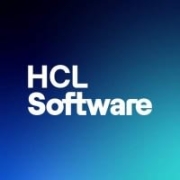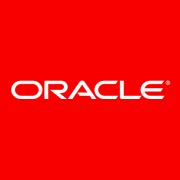Corporate Portals serve as centralized platforms, integrating diverse enterprise tools and applications into a unified interface for improved collaboration and efficiency. These portals streamline internal communications and data management.
These portals offer intuitive interfaces and customizable dashboards, ensuring seamless integration with existing enterprise applications and enhancing workflow productivity. Offering secure access controls and user-friendly designs, these solutions meet different organizational needs across industries. Enhanced collaboration features foster a cohesive enterprise environment, aiding in efficient decision-making processes by providing real-time data access across departments.
What are the critical features of Corporate Portals?In sectors like finance and healthcare, Corporate Portals streamline data management, offering secure client interaction and real-time updates. Retail industries use these portals for inventory management, while tech firms utilize them for collaborative project development and agile methodologies.
These portals are valuable for organizations needing to enhance their workflow efficiency and communication processes. By integrating disparate systems and providing a cohesive user interface, they contribute significantly to improved organizational functionality and decision-making.
| Product | Market Share (%) |
|---|---|
| SharePoint | 28.0% |
| Liferay Digital Experience Platform | 19.4% |
| Drupal | 14.5% |
| Other | 38.1% |



















Portals and websites each have characteristics that make them distinctive from one another.
1. The first major difference between a portal and a website is where they are hosted. Portals are hosted on secure servers that are only accessible by people who are in possession of a specific set of authorized credentials. This means that someone who is merely surfing the internet cannot accidentally gain access to a corporate portal. If you are a member of the public and lack the proper level of authorization and the right credentials, then you will not have the ability to view or access a portal. The same cannot be said of websites, which are hosted on the internet. They can be easily found and viewed by anyone who stumbles upon them or who searches for the uniform resource locator (URL) that is connected to that website.
2. Another major difference between portals and websites is the actions that one takes to access them. Usually, a website will not require any specific actions to be undertaken in order to gain access to its contents. However, as has been noted, unique credentials are usually going to be required before a given user can access the contents of a portal. The user will be prompted to supply their credentials when they attempt to enter the portal.
3. The very purposes of portals and websites could not be more different. Portals are meant to secure data and make it so that only specific users can access the information stored within. They take active steps to make sure that only specific users can use them. However, websites usually work in exactly the opposite way. They have no interest in limiting access to their contents. Websites usually seek to attract as many users and as much traffic as they can over the smallest periods of time possible. Companies build websites with the intention of drawing new users into their spheres of influence. Websites are usually meant either to help a brand expand its reach or to provide previously unknown information to the public.
4. Additionally, the nature of the data that is contained within portals and websites can differ rather drastically. The content that portals contain are always shifting and changing to reflect the changes taking place within the corporation or organization. Portals will always contain this kind of changing content that is known as dynamic content. While websites can contain dynamic content, it is not a given that they will have content of this kind. It is equally possible that the content of a given website will be unchanging. This static content will not change when a new user enters the website.
Enterprise portal software enables enterprises to integrate process information using a web-based interface. It also allows authorized personnel to access web services; this includes portal networks that span the entire enterprise.
EPS packages may include:
• Content management systems
• Document management systems,
• Customer relations management
• Business intelligence
• Collaboration software
• Wiki
• Company blogs
Some of the benefits that corporations can reap by using corporate portal software include:
In order for corporate portal software to be considered effective, there are certain features that it should possess:
Corporate Portals centralize access to business applications, communication tools, and data, making it easier for your team to access necessary information quickly. By integrating different systems into one cohesive platform, portals reduce search time, enhance collaboration, and streamline workflows. This allows you to focus on strategic initiatives, promoting better productivity and efficiency.
What features should you look for in a Corporate Portal?When selecting a Corporate Portal, prioritize features like user-friendly design, customizable interfaces, and robust security measures. It should support integration with existing software, provide analytics tools, and offer mobile accessibility. Ensure the portal allows for role-based access control, facilitating tailored experiences that meet individual user needs while maintaining security.
How do Corporate Portals enhance data security?Corporate Portals consolidate access points, which helps manage and monitor data usage more effectively. They often come with robust security protocols like encryption, two-factor authentication, and access control measures. This minimizes unauthorized access and data breaches, ensuring your sensitive information remains protected while allowing authorized personnel to easily access necessary resources.
What are the cost considerations for implementing a Corporate Portal?The cost of a Corporate Portal can vary based on customization needs, integration complexity, and scalability requirements. Consider licensing fees, implementation costs, and ongoing maintenance expenses. While initial investments may be considerable, the long-term gains in productivity and efficiency often outweigh these costs. Evaluate whether a cloud-based solution might offer more cost efficiency compared to on-premise deployments.
How can Corporate Portals support remote work environments?Corporate Portals provide a single point of access for remote employees, offering tools and resources necessary for their roles regardless of location. Through integrated communication features like chat and video conferencing, they ensure seamless collaboration. Additionally, these portals can streamline processes by syncing with cloud applications, supporting flexibility in work environments, and helping maintain productivity outside of traditional office settings.